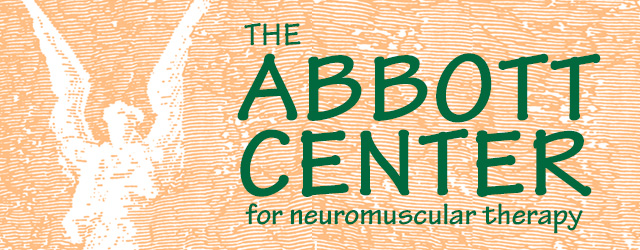FREQUENTLY ASKED QUESTIONS:
Pain Relief with Massage, Pilates and Neuromuscular Therapy • Open 7 Days • Gift Certificates Available Online 24/7
The techniques used are somewhat different from massage. NMT techniques involve primarily the use of flushing (called effleurage in massage) to warm up the tissues and clear waste products; lightly lubricated slow gliding strokes to examine, soften and lengthen a muscle; compression and static pressure to release contractions, often with pressure bars or other tools; and digital manipulation to stimulate a change in static dysfunctional tissue. Other complementary techniques or modalities may be used, for example active or passive stretching, lymphatic drainage, skin rolling, “myofascial release,” ice or heat, and “muscle energy” or “positional release” techniques.
The setting for NMT is often more medical or clinical than MT. Clients at The Abbott Center wear a hospital gown or towel for draping rather than a top sheet. Relaxing music is not necessarily used since communication between patient and therapist is essential.
In general, a neuromuscular therapist works more deeply and more specifically on the area of concern. At The Abbott Center, full body work is never done because the work is always focused only on the muscles that are contributing to the pain pattern.
